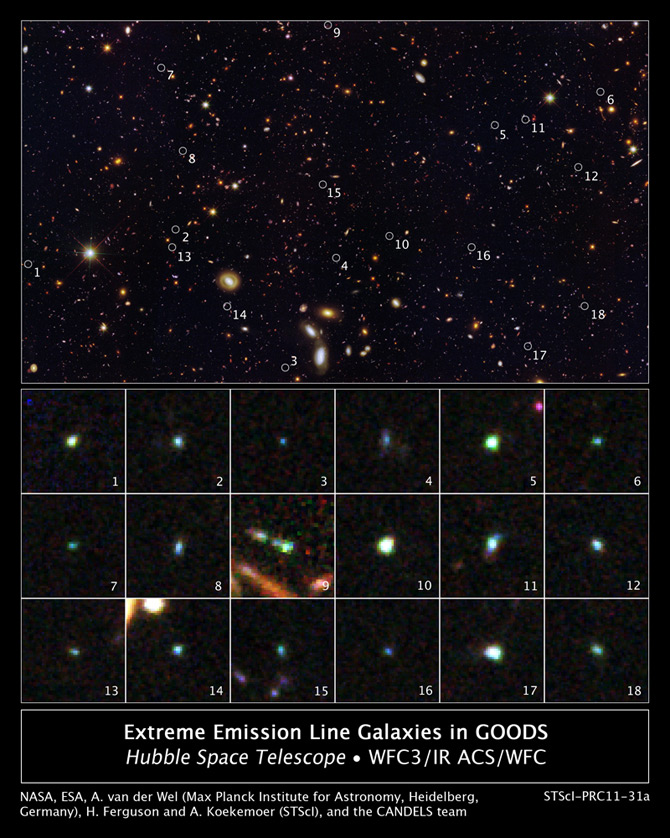Using its near-infrared vision to peer 9 billion years back in time, NASA's Hubble Space Telescope has uncovered an extraordinary population of young dwarf galaxies brimming with star formation. While dwarf galaxies are the most common type of galaxy in the universe, the rapid star-birth observed in these newly found examples may force astronomers to reassess their understanding of the ways in which galaxies form.
The galaxies are a hundred times less massive, on average, than the Milky Way, yet churn out stars at such a furious pace that their stellar content would double in just 10 million years. By comparison, the Milky Way would take a thousand times longer to double its star population.
The universe is estimated to be 13.7 billion years old, and these newly discovered galaxies are extreme even for the young universe -- when most galaxies were forming stars at higher rates than they are today. Astronomers using Hubble's instruments could spot the galaxies because the radiation from young, hot stars has caused the oxygen in the gas surrounding them to light up like a bright neon sign.
"The galaxies have been there all along, but up until recently astronomers have been able only to survey tiny patches of sky at the sensitivities necessary to detect them," said Arjen van der Wel of the Max Planck Institute for Astronomy in Heidelberg, Germany, lead author of a paper on the results being published online on Nov. 14 in The Astrophysical Journal. "We weren't looking specifically for these galaxies, but they stood out because of their unusual colors."
The observations were part of the Cosmic Assembly Near-infrared Deep Extragalactic Legacy Survey (CANDELS), an ambitious three-year study to analyze the most distant galaxies in the universe. CANDELS is the first census of dwarf galaxies at such an early epoch
.
"In addition to the images, Hubble has captured spectra that show us the oxygen in a handful of galaxies and confirmed their extreme star-forming nature," said co-author Amber Straughn at NASA's Goddard Space Flight Center in Greenbelt, Md. "Spectra are like fingerprints. They tell us the galaxies' chemical composition."
The resulting observations are somewhat at odds with recent detailed studies of the dwarf galaxies that are orbiting as satellites of the Milky Way.

This image reveals 18 tiny galaxies uncovered by NASA's Hubble Space Telescope. The puny galaxies, shown in the postage stamp-sized images, existed 9 billion years ago and are brimming with star birth. Hubble's Wide Field Camera 3 and Advanced Camera for Surveys spied the galaxies in a field called the Great Observatories Origins Deep Survey (GOODS). The galaxies are among 69 dwarf galaxies found in the GOODS (marked by green circles in the large image) and other fields. Images of the individual galaxies were taken November 2010 to January 2011. The large image was taken between Sept. 2002 and Dec. 2004, and between Sept. 2009 and Oct. 2009.
See the website for more details:http://www.nasa.gov/home/hqnews/2011/nov/HQ_11-378_Hubble_CANDELS.html (SY)
